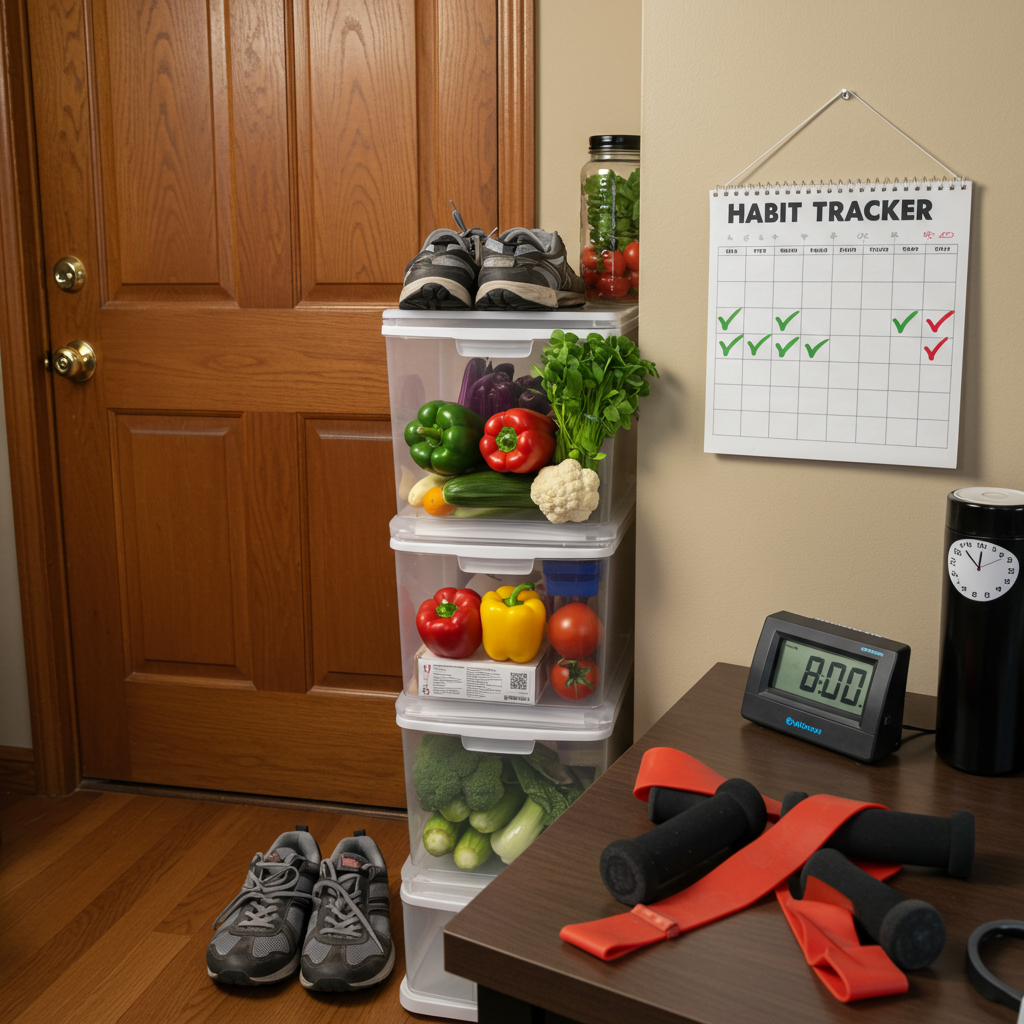The Power of Consistency: How Small Daily Habits Create Massive Blood Sugar Wins
In the realm of metabolic health, consistency trumps perfection. As someone who's deeply immersed in the neuroscience of habit formation and its impact on metabolic health, I'm convinced that sustainable blood sugar management isn't about herculean efforts—it's about regular, deliberate micro-habits that compound over time. Let's explore how the neurobiological foundations of habit formation can revolutionize your approach to diabetes management.
The Neuroscience of Glucose-Friendly Habit Formation
Our brains are remarkably plastic, constantly rewiring themselves based on our repeated behaviors. This neuroplasticity is the foundation for establishing blood sugar-friendly habits. When we consistently engage in activities that promote stable glucose levels, we're not just affecting our immediate metabolic state—we're literally reshaping neural pathways.
The basal ganglia, a group of structures deep within our brain, plays a crucial role in habit formation. When we repeat glucose-stabilizing behaviors—whether that's morning exercise, consistent meal timing, or regular glucose monitoring—the basal ganglia begins to automate these processes, reducing the cognitive load required to maintain healthy practices.
What's fascinating is that habits follow a neurological loop of cue, routine, and reward. For example:
- Cue: Waking up in the morning
- Routine: Drinking a glass of water and taking a 10-minute walk
- Reward: Improved morning glucose readings and increased energy
Over time, this loop becomes increasingly automated, requiring less willpower to maintain. This is particularly valuable for diabetes management, which demands consistent attention day after day, year after year.

Three Cornerstone Habits for Blood Sugar Stability
Rather than trying to overhaul your entire lifestyle at once (which typically leads to burnout), focus on establishing these three foundational habits that have outsized impacts on glucose control:
1. The Morning Metabolic Primer
The first 30-60 minutes after waking represent a powerful opportunity to set your metabolic tone for the day. Research shows that morning light exposure combined with movement can significantly improve insulin sensitivity. Try this simple routine:
- Upon waking, get 5-10 minutes of direct morning sunlight
- Perform 3-5 minutes of light movement (stretching, walking, or bodyweight exercises)
- Hydrate with 16oz of water before consuming any caffeine
This sequence activates cortisol at the appropriate time of day, helping to regulate your circadian rhythm, which has profound effects on glucose metabolism. Importantly, this habit takes less than 15 minutes but can improve glucose readings throughout the entire day.
2. Strategic Meal Sequencing
The order in which you consume food significantly impacts postprandial glucose excursions. Implementing a consistent meal sequence habit is simple yet remarkably effective:
- Start with fiber-rich vegetables or a small salad
- Follow with protein and healthy fats
- Consume any starchy carbohydrates last
This sequencing slows gastric emptying and reduces the glucose spike that might otherwise occur. Studies show this simple habit can reduce postprandial glucose levels by 20-30% compared to eating the same foods in reverse order.

3. Movement Snacking Throughout the Day
Rather than viewing exercise as a discrete activity that happens once daily, implement "movement snacks"—brief bursts of physical activity scattered throughout your day. These 2-5 minute movement sessions have remarkable effects on glucose disposal:
- 1-2 minutes of walking after meals
- 20 squats or wall push-ups before lunch
- 5 minutes of stretching in the afternoon
- Taking stairs instead of elevators
These micro-sessions of movement activate glucose transporters (GLUT4) and improve insulin sensitivity without requiring dedicated workout time. The consistency of these small interventions often outperforms longer but less frequent exercise sessions for blood sugar management.
Building Your Habit Implementation Protocol
The key to success lies not in motivation but in implementation. Here's how to ensure these habits stick:
-
Start impossibly small: Begin with a version of the habit so tiny you can't say no. Two minutes of walking after dinner is better than planning a 30-minute walk that never happens.
-
Stack habits onto existing routines: Attach new habits to firmly established ones. For example, "After I brush my teeth (established habit), I will do 10 squats (new habit)."
-
Track consistency, not perfection: Use a simple method to track habit completion. The goal is consistency over time, not perfection each day.
-
Design your environment: Modify your surroundings to make glucose-friendly habits inevitable. Keep walking shoes by the door, prep vegetables at eye level in your refrigerator, and set timers for movement breaks.

Remember that neuroplasticity works in your favor—each day you practice these habits, the neural pathways strengthen, making healthy behaviors increasingly automatic and reducing the glucose variability that challenges metabolic health.
Consistency in these small daily practices will yield far greater results than occasional heroic efforts. Your pancreas, insulin receptors, and brain will thank you for the steady, reliable approach to blood sugar management.
References
-
Wyatt, P., Berry, S.E., Finlayson, G. et al. (2021). Postprandial glycaemic dips predict appetite and energy intake in healthy individuals. Nature Metabolism, 3, 523–529.
-
Gillen, J. B., & Gibala, M. J. (2014). Is high-intensity interval training a time-efficient exercise strategy to improve health and fitness? Applied Physiology, Nutrition, and Metabolism, 39(3), 409-412.






